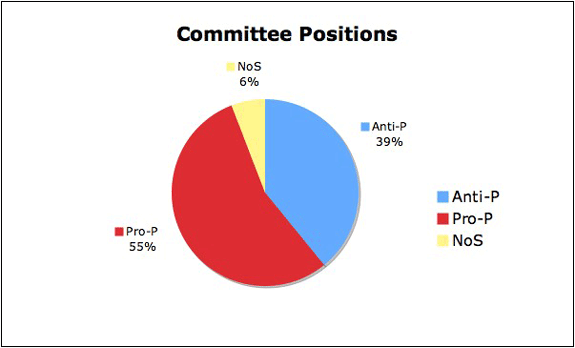Committeemen Factionalism

The Committee List Data Set allows us to count and display the number of committee positions held by members of Salem Village's rival factions.
From the Data menu, select "Filter" and "AutoFilter." Click the filter icon on the "Petition" column and select "Anti-P": it reveals only anti-Parris committeemen and the committees on which they served. In the Status Bar at the bottom of the spreadsheet window, make sure that "Count" is selected (if not, click the bar and select "Count"). Drag through all of the cells for the committee years, excluding the label cells and the Sort column. The total number of committee seats held by anti-Parris committeemen will appear in the Status Bar (27). Do the same for the "Pro-P" faction and the "NoS" (No Signature) group. Record the data in a new spreadsheet.
| Anti-P | Pro-P | NoS |
| 27 | 38 | 4 |
Create a pie chart with this data by dragging through the two rows to select them. Open the Chart Wizard. Choose "Pie": the two rows of cells are identified in the "Data Range" window. The Rows button must be selected, indicating "series in" rows. The pie chart (see above) can be edited in the Chart Options window and in the completed chart by right-clicking the labels and selecting "Format Data Labels."
The data confirm that most Salem Village committeemen sided with their minister: 55% of the sixty-nine committee seats during this period were held by his supporters, only 39% by those who signed the anti-Parris petition. The overwhelmingly anti-Parris committees of 1691-1693 were, therefore, unusual in pitting the village committee against the village church. In general, the village's church and committeemen were aligned in their support of Parris.
To investigate the social characteristics of all committeemen, click Next.